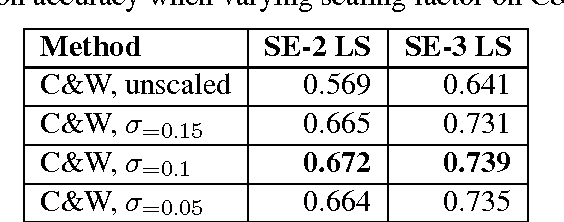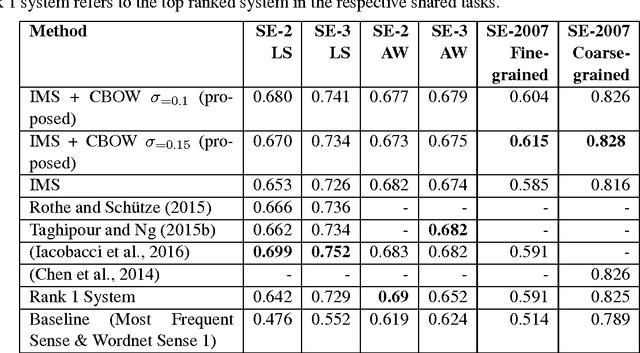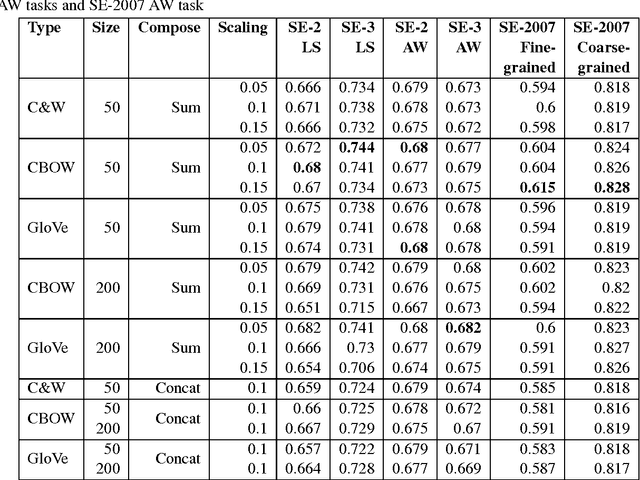A Comparison of Word Embeddings for English and Cross-Lingual Chinese Word Sense Disambiguation
Paper and Code
Apr 09, 2017



Word embeddings are now ubiquitous forms of word representation in natural language processing. There have been applications of word embeddings for monolingual word sense disambiguation (WSD) in English, but few comparisons have been done. This paper attempts to bridge that gap by examining popular embeddings for the task of monolingual English WSD. Our simplified method leads to comparable state-of-the-art performance without expensive retraining. Cross-Lingual WSD - where the word senses of a word in a source language e come from a separate target translation language f - can also assist in language learning; for example, when providing translations of target vocabulary for learners. Thus we have also applied word embeddings to the novel task of cross-lingual WSD for Chinese and provide a public dataset for further benchmarking. We have also experimented with using word embeddings for LSTM networks and found surprisingly that a basic LSTM network does not work well. We discuss the ramifications of this outcome.
 Add to Chrome
Add to Chrome Add to Firefox
Add to Firefox Add to Edge
Add to Edge